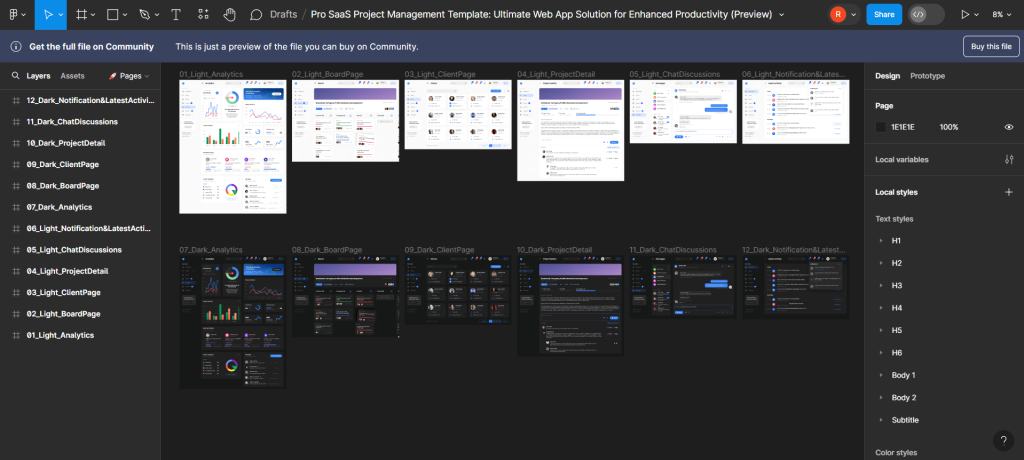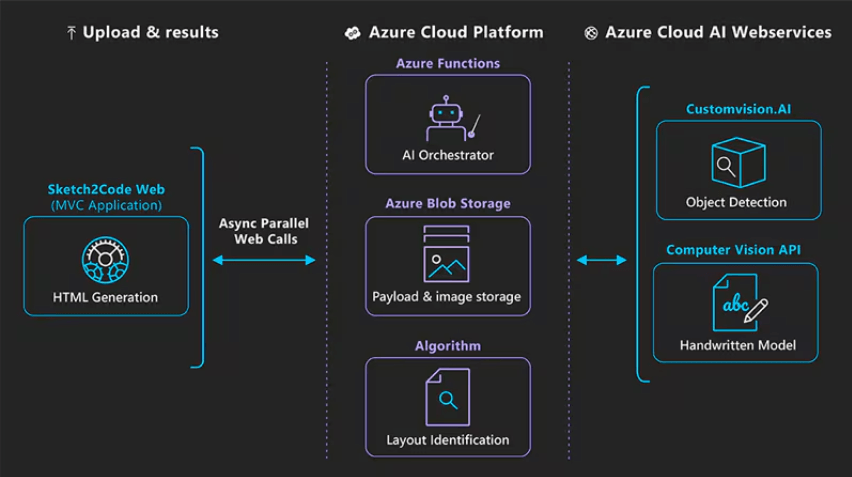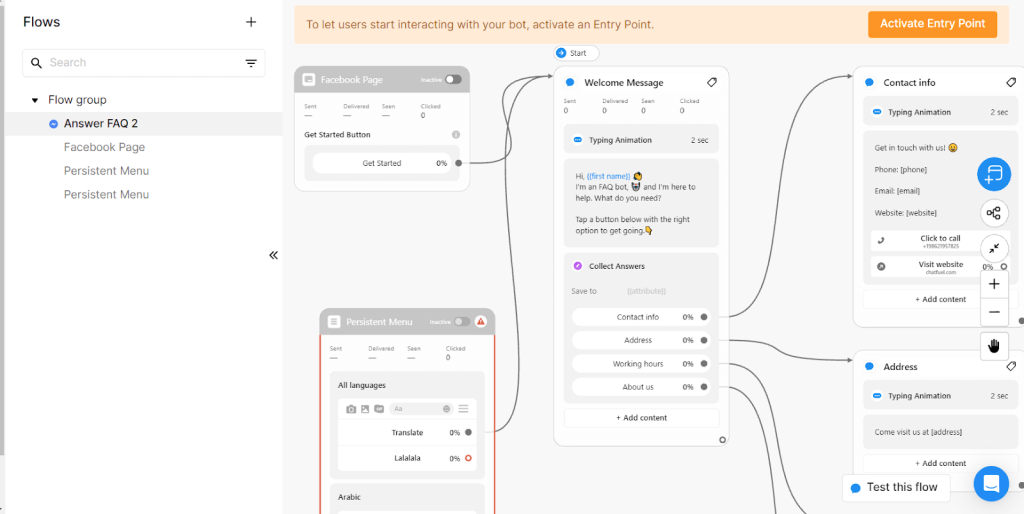In the world of UX design, the convergence of AI technology presents both excitement and apprehension. As AI continues its rapid advancement, from ChatGPT to Midjourney and beyond, professionals in the field ponder its implications in their daily work. The prospect of AI generating content across various mediums raises concerns about its future capabilities, perhaps even surpassing human intellect. AI and UX design can be considered as a great combination by which you can take your design skills to the next level.
You should consider AI as a tool for collaborative innovation instead of as a threat to traditional skill sets. Besides, By embracing existing AI tools, UX designers can explore new possibilities to enhance user experiences and streamline design processes. Leveraging AI technologies can lead to more efficient workflows and foster creativity, ultimately resulting in better UX and UI designs.
Enhance Your Expertise with AI and UX and Design
The integration of AI into UX and UI design offers numerous opportunities to boost efficiency, effectiveness, and overall quality. From streamlining repetitive tasks to igniting creativity, AI has become a valuable asset for designers in enhancing their work. The relationship between AI and UX design can help designers to do very efficient user research. Moreover, It also supports them in creating good UI designs. Here are several examples of how AI is currently being utilized in UX and UI design-
Chatbots
AI-powered chatbots play a crucial role in aiding users to navigate intricate websites or applications, offering tailored assistance and support, thereby enhancing engagement and satisfaction levels. A prime instance is H&M’s chatbot on Facebook Messenger, which assists users in discovering products, monitoring orders, and receiving fashion recommendations.
Recommendation algorithms
Recommendation algorithms utilize user data analysis to deliver personalized content and product suggestions, ultimately amplifying user satisfaction and driving conversion rates. A notable example is Amazon’s recommendation engine, which leverages user purchases and browsing history to offer tailored product recommendations. Similarly, streaming platforms such as Spotify and Netflix utilize similar algorithms to present recommendations based on users’ past interactions.
Analyze user behavior data
AI-driven platforms such as Hotjar and Google Analytics possess the capability to analyze user behavior data, identifying pain points, patterns, and valuable insights that can guide design decisions. This combination of AI and UX design can lead you to proper user research with which you can make good UI design.
Persona creation
AI-driven tools such as Crystal can analyze user data sourced from social media profiles, emails, and various other channels, enabling the creation of precise and comprehensive personas. This facilitates the development of more personalized and impactful user experiences, bypassing the need for extensive user research. Moreover, in refining the creative elements of user personas, conversational AI tools can provide valuable suggestions. Engaging with a role-playing AI allows for the exploration of genuine characters and the testing of their thought processes.
Sourcing fresh perspectives
Share the fundamental outline of a challenge you’re facing with an AI and seek 20 fresh viewpoints or innovative solutions. Prompt the AI to pose unforeseen questions about the problem, inspired by Brian Eno’s celebrated Oblique Strategies but tailored to your specific scenario. This method is designed to stimulate unconventional insights and inspire imaginative approaches to resolving the issue.
Placeholder copy
AI-powered platforms such as Articoolo and Copy.ai can offer recommendations for headlines, body text, and other design components tailored to your goals and preferences. In the absence of a dedicated UX writer or copywriter within your team, AI-generated copy provides more engaging alternatives to traditional Lorem Ipsum placeholder text. However, it’s advisable to have a professional writer refine the content later for optimal quality.
Kickstart creativity
AI has the capability to produce recommendations for color palettes, font styles, and various other design elements, allowing you to concentrate on more essential aspects of the design process. You can use those AI and UX design can become very prominent with better creativity.
Best practices for AI and UX design
For UX or UI designers, AI presents numerous opportunities to streamline workflows and craft user experiences that are both effective and personalized. Given the rapid expansion of the field, with new technologies continually emerging, it’s valuable to explore some best practices for integrating AI tools.
Treat AI as a collaborator, not a replacement for critical thinking
Although AI can automate tasks and offer unexpected insights, it’s crucial to verify its outputs. AI frequently makes errors in factual accuracy, so any information it provides should be cross-checked and approached with caution.
Consider ethical concerns when working with AI algorithms
AI has the potential to reinforce biases and discrimination if not adequately programmed and tested. For instance, an AI-driven hiring system might perpetuate bias against women or individuals from marginalized communities if the training data used for algorithm development reflects historical hiring patterns that favored white men.
Be transparent about the use of AI
A major concern regarding AI algorithms is their lack of transparency. Often, these algorithms are opaque and challenging to interpret, making it difficult to detect and address potential biases or inaccuracies. Given the novelty of these technologies, it’s essential to maintain transparency regarding their usage. This underscores the importance of employing AI collaboratively rather than as a substitute for human labor.
AI tools for UX and UI designers
Now that we’ve discussed the background of AI’s emergence, its potential for enhancing efficiencies, and explored some best practices, let’s dive into practical application. Here’s a brief overview of several popular AI tools extensively utilized in the UX/UI design industry. Here’s a quick overview of some popular AI tools commonly utilized in the UX/UI design industry:
ChatGPT

This AI-powered chatbot from OpenAI assists in generating ideas and crafting common-sense narratives. You can use this AI for generating new ideas, writing articles, and getting assistance in many other regular tasks. ChatGPT can help you to come up with new things and enhance your creativity by discussing things with you. You can treat it like a personal human assistant.
Adobe Sensei
A suite of AI-powered tools by Adobe, facilitating tasks like automated image tagging, content-aware fill, and personalized recommendations. Adobe Sensi offers AI-driven insights for UX designers, aiding in data analysis, user behavior prediction, and trend identification. Its intuitive interface streamlines decision-making, enhancing design processes and user experiences.
Figma

Firstly, it is a collaborative design tool equipped with AI-powered features such as auto-layout and smart selection, accelerating design processes. Figma is the best tool for all UX designers. Figma streamlines UX design with collaborative real-time editing, prototyping, and iteration features. Its versatile platform allows designers to create, share, and iterate on designs seamlessly, enhancing collaboration and efficiency in the design process.
Sketch2Code

Developed by Microsoft, this tool employs AI to transform hand-drawn sketches into functional HTML code, saving substantial development time. Sketch2Code automates the process of converting hand-drawn user interface sketches into functional HTML code. This enables UX designers to quickly translate their ideas into tangible prototypes, saving time and effort in the design iteration process.
Chatfuel

A no-code platform enabling swift creation of chatbots, enhanced by AI-driven features like natural language processing and sentiment analysis for improved user interactions. Chatfuel empowers UX designers to create interactive chatbots without coding. It streamlines user testing, gathers feedback, and iterates designs seamlessly within messaging platforms, enhancing user engagement and refining user experiences effortlessly.
TensorFlow
An open-source platform for constructing and deploying machine learning models, applicable for tasks such as image recognition, speech recognition, and natural language processing. TensorFlow enables UX designers to create and prototype interactive designs with machine learning elements, facilitating user-centered experiences. Its tools aid in analyzing user behavior, predicting preferences, and enhancing usability through data-driven insights.
Lobe
An intuitive platform for building custom machine-learning models without coding, suitable for tasks like image classification and object detection. Lobe AI can empower you by simplifying machine learning model creation, enabling intuitive design exploration, and facilitating user-centric prototyping. With its user-friendly interface, Lobe AI enhances your UX design process, fostering innovation and efficiency.
These are just a few examples of the plethora of AI tools available to UX and UI designers. As new technologies continue to emerge, it’s advisable to explore them with curiosity while maintaining a healthy dose of skepticism.
Conclusion
The integration of AI technology into the world of UX and UI design offers immense potential for streamlining workflows, enhancing efficiency, and creating more personalized user experiences. From AI-powered chatbots to collaborative design tools and machine learning platforms, there is a wide array of tools available to designers to leverage AI capabilities effectively.
However, it’s essential to approach AI tools with caution, acknowledging their limitations, potential biases, and the need for human oversight. As the field of AI continues to evolve and innovate, designers must remain adaptable, continuously exploring new technologies while upholding ethical standards and maintaining a collaborative approach to design.
By embracing AI as a complement to human creativity and expertise, designers can unlock new possibilities and shape the future of UX and UI design in exciting and innovative ways.
FAQs
1. What is AI and how does it relate to UX design?
AI, or artificial intelligence, encompasses technologies that enable machines to perform tasks that typically require human intelligence. In the context of UX design, AI plays a crucial role in enhancing user experiences by automating tasks, providing personalized recommendations, and generating insights from user data.
2. How can AI improve efficiency in UX design processes?
AI-powered tools can streamline various aspects of the UX design process by automating repetitive tasks, such as generating design elements or analyzing user behavior data. This allows designers to focus more on creative and strategic aspects of their work, ultimately leading to more efficient workflows.
3. Are there any risks associated with using AI in UX design?
While AI offers numerous benefits, there are also risks to consider, such as the potential for bias and lack of transparency in AI algorithms. Designers must be mindful of these risks and take steps to mitigate them, such as ensuring diverse and representative training data and conducting thorough testing and validation of AI models.
